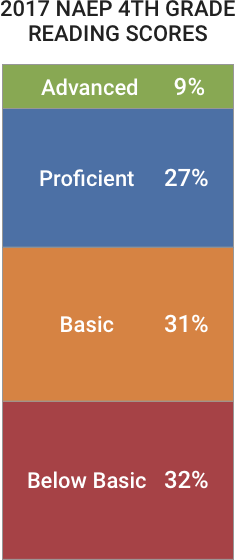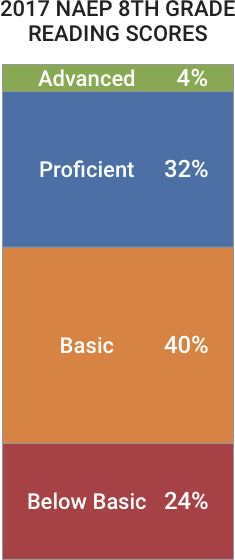How to Raise Reading Scores for Your School
To raise reading scores for many of the students at your school, do the following:
- Recognize that for many students improving reading fluency is the key to raising their reading levels and test scores.
- Identify your low fluency readers.
- Use Ultimate Phonics to improve their reading fluency with an intensive, systematic phonics intervention or supplementation.
Make this a year of major reading improvement for your struggling readers. Learn more about Ultimate Phonics site licenses or get a quote by clicking on the green button to the right.
SITE LICENSE SALE
Take a look at our Ultimate Phonics
Site License sale!
- A site license for a fixed number of computers or unlimited.
- A big discount off the normal price.
- A site license that never expires for a one-time charge instead of an annual subscription
- No limit on the number of students
- Free upgrades
Thank you again, I really love the Ultimate Phonics program. It's helping so many of my struggling readers.Michelle Bottenhorn, Intervention Specialist
Cincinnati, OH
Improving Reading Fluency is the Key
to Raising Reading Scores
For struggling readers, a primary cause of their poor reading scores is low reading fluency. For these students, the #1 way to raise their test scores is improve their reading fluency with a systematic, intensive phonics program.
Reading fluency is the ability to read text accurately, quickly, and automatically so that most of the attention can be given to comprehension.
Good reading fluency is a requirement for good reading comprehension. Low fluency readers have poor comprehension, and this causes them to have low reading scores.
If you have students with good spoken English comprehension but poor reading comprehension, the problem is usually low fluency reading.
Identify Your Low Fluency Readers
Identifying your low fluency readers is easy. Just listen to them read some moderately challenging text (or you can use our free Reading Fluency Test).
Look for two types of low fluency readers: Guessers and Plodders.
Guessers
Guessers are whole word memorizers who lack the phonics decoding skill to sound out new words.
When they try to read a word they don't already know they will guess, usually by substituting a different word starting with the same letter and with similar length. Or sometimes they'll just skip the word altogether.
This causes poor comprehension because they are not reading what the text says. They are changing the meaning by substituting incorrect words and leaving words out.
In addition to poor comprehension, Guessers are in big trouble because they have no way to independently learn new words that are not already in their vocabulary.
Plodders
Plodders read slowly and laboriously, word by word. They are better off than Guessers because at least they are sounding out new words instead of guessing and skipping.
The problem with plodders is their phonics decoding skills are too weak. They give so much attention to figuring out individual words that they can't keep track of the meaning, which causes poor comprehension.
Guessers and Plodders enter a cycle of learning failure where they fall farther and farther behind as they move into higher grades. The only way to break this cycle and raise their test scores is to improve their reading fluency and comprehension with a strong phonics-based intervention.
Your School Has a Lot of Low Fluency Readers
If your school is typical, you probably have a lot of low fluency Guessers and Plodders.
To get an idea of how many low fluency readers your school might have, take a look at the latest national reading scores from 2017. In the U.S., the National Assessment of Educational Progress (NAEP) conducts national reading tests for 4th and 8th graders every two years.
Here are the latest national 4th grade reading scores for 2017:
| Reading Level | Description |
|---|---|
| Below Basic 32% |
Almost one-third of 4th grade students are functionally illiterate, unable to read at a basic level. They have almost no reading comprehension and they cannot spell. Almost all of these students are low fluency readers. |
| Basic 31% |
Roughly another one-third of students read at a basic level, minimally meeting the lowest expectations for 4th grade reading. They have some reading ability, but they are weak readers with poor comprehension and bad spelling. Many of these students are low fluency readers. |
| Proficient 27% |
A little over one-fourth of students read at at a Proficient level, fully meeting (but not exceeding) expectations for 4th grade reading. They have good reading comprehension and good spelling. |
| Advanced 9% |
Only 9% of students read at an Advanced level, exceeding expectations for 4th grade reading. They are the top students who are excellent readers and spellers. |
Most of your Below Basic and many of your Basic readers have low fluency. You should identify students in your bottom 30% to 50% for reading fluency improvement, not just the very worst readers.


Target Your Guessers and Plodders
to Raise Reading Scores
For low fluency Guessers and Plodders, the only way to raise their reading scores is to teach them with an intensive, systematic phonics program, like the Ultimate Phonics Reading Program.
For students who guess and skip, they need to learn the phonics system of English and how to sound out words accurately based on the spelling.
For students who read slowly, they need a lot of controlled reading practice so they learn to sound out words quickly and automatically.
A program like Ultimate Phonics, with thousands of expertly organized words and sentences, acts as a training program to turn slow, halting readers into fast, accurate readers with good comprehension and higher test scores.
- Inexpensive
- One-time charge
- Easy to get started
- Suitable for any age
- Requires minimal teacher training
- Ideal for intervention or supplementation
SITE LICENSE SALE
Take a look at our Ultimate Phonics
Site License sale!
- A site license for a fixed number of computers or unlimited.
- A big discount off the normal price.
- A site license that never expires for a one-time charge instead of an annual subscription
- No limit on the number of students
- Free upgrades

